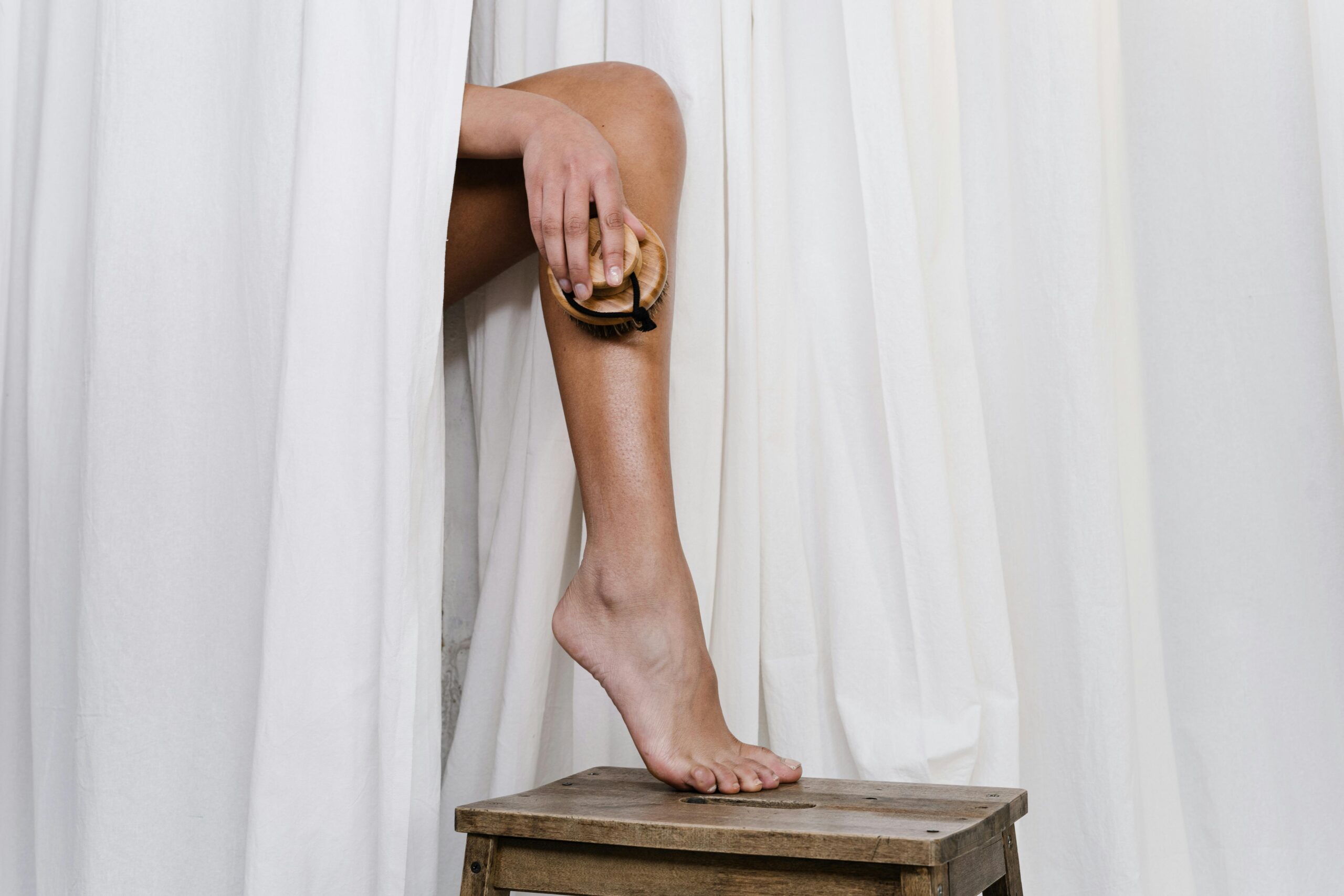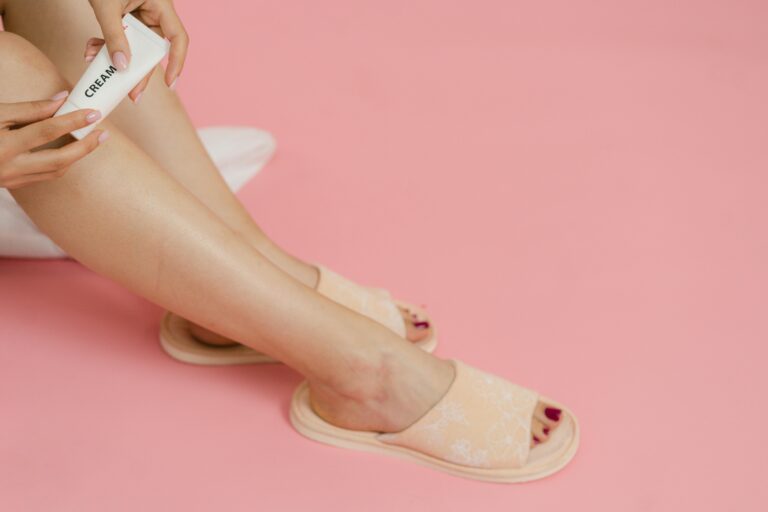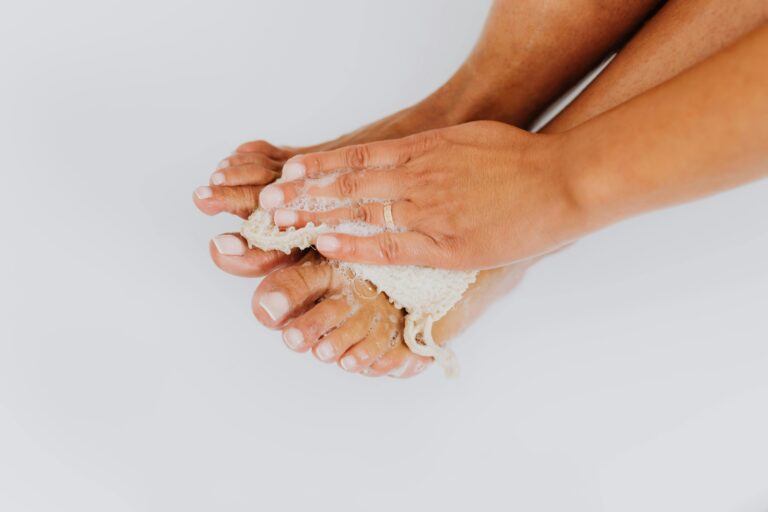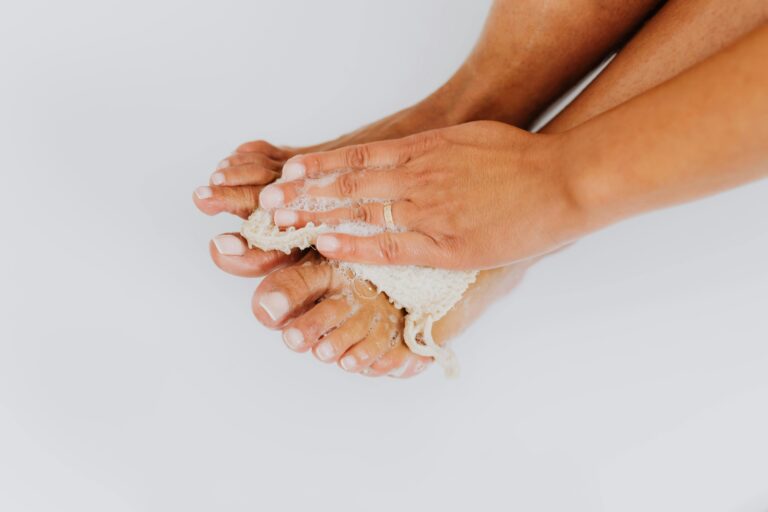Taking care of your feet is essential for overall foot health and comfort, yet it’s often overlooked in our skincare routines. Using a foot scrub into your regimen is a simple and effective way to exfoliate, refresh, and rejuvenate your feet. Not only does it remove dead skin cells, but it also provides several benefits that can enhance the health and appearance of your feet.
In this article, we’ll explore why foot scrubs are a valuable addition to your foot care routine and how they can make a noticeable difference.
Benefits of Using a Foot Scrub
1. Removes Dead Skin Cells
One of the primary benefits of using a foot scrub is its ability to remove dead skin cells. The exfoliating agents in foot scrubs, such as salt, sugar, or pumice, help to slough off the outer layer of dead skin. This process reveals fresher, smoother skin beneath, reducing rough patches and calluses. Regular exfoliation helps maintain soft and supple feet, enhancing their overall appearance and feel.
2. Prevents Calluses and Cracked Heels
Calluses and cracked heels are common issues that can result from dry, rough skin. Foot scrubs are designed to target these problem areas, helping to reduce and prevent the buildup of calluses. By removing dead skin and smoothing rough patches, foot scrubs can significantly reduce the risk of developing painful cracks and calluses. Consistent use can lead to healthier, more comfortable feet.
3. Improves Circulation
Massaging your feet while using a foot scrub can stimulate blood flow and improve circulation. The gentle massage action helps to relax tired muscles and increase oxygen delivery to the skin cells. Improved circulation can lead to better overall foot health and a reduction in symptoms like swelling or fatigue. Additionally, enhanced circulation can promote faster healing of minor injuries or irritations.
4. Enhances Moisture Absorption
Exfoliating your feet with a foot scrub prepares your skin to better absorb moisturizers and treatments. By removing the top layer of dead skin, foot scrubs create a smoother surface that allows moisturizers to penetrate more deeply. This results in more effective hydration, helping to keep your feet soft and well-nourished. For optimal results, follow up your foot scrub with a rich foot cream or lotion.
5. Provides a Spa-Like Experience
Using a foot scrub can turn a simple foot care routine into a relaxing, spa-like experience. The act of scrubbing your feet, combined with soothing scents and textures, can be a therapeutic way to unwind after a long day. It’s a great opportunity for self-care and relaxation, allowing you to pamper yourself and enjoy some much-needed downtime.
6. Reduces Odor
Feet can sometimes develop unpleasant odors due to the buildup of sweat and bacteria. Regular use of a foot scrub helps to cleanse the feet thoroughly and remove any odor-causing substances. Ingredients like tea tree oil or peppermint, commonly found in foot scrubs, have natural antimicrobial properties that can help combat foot odor. Fresh, clean feet are less likely to develop unpleasant smells, enhancing your overall comfort and confidence.
How to Use a Foot Scrub Effectively
To get the most out of your foot scrub, follow these simple steps:
- Soften Your Feet: Begin by soaking your feet in warm water for about 10-15 minutes. This will help to soften the skin and make it easier to exfoliate.
- Apply the Foot Scrub: Take a generous amount of foot scrub and apply it to your damp feet. Use circular motions to massage the scrub into your skin, paying extra attention to areas prone to roughness or calluses.
- Rinse and Pat Dry: After scrubbing, rinse your feet thoroughly with warm water to remove all traces of the scrub. Pat your feet dry with a clean towel.
- Moisturize: Finish by applying a rich foot cream or lotion to keep your feet hydrated and smooth. This will help to lock in moisture and maintain the softness achieved through exfoliation.
Conclusion
Using a foot scrub into your skincare routine offers numerous benefits, from removing dead skin cells to improving circulation and reducing foot odor. By regularly exfoliating your feet, you can maintain healthy, smooth, and comfortable feet while enjoying a spa-like experience at home. With consistent use, foot scrubs can help you address common foot issues, enhance moisture absorption, and make your foot care routine more enjoyable. So, treat your feet to the care they deserve and experience the difference a foot scrub can make.
Frequently Asked Questions (FAQs)
1. How often should I use a foot scrub?
For most people, using a foot scrub 1-2 times per week is sufficient. Over-exfoliating can irritate the skin, so it’s important to listen to your feet and adjust the frequency based on their needs. If you have particularly rough or calloused areas, you might benefit from more frequent exfoliation.
2. Can I use a foot scrub on sensitive skin?
Yes, but you should choose a foot scrub formulated for sensitive skin. Look for products with gentle exfoliating agents and soothing ingredients. Always do a patch test before using any new product to ensure it doesn’t cause irritation.
3. Are foot scrubs suitable for all skin types?
Foot scrubs are generally suitable for all skin types. However, if you have specific skin conditions such as eczema or psoriasis, it’s best to consult with a dermatologist before using a foot scrub. They can recommend products that are safe and effective for your condition.
4. Can I make my own foot scrub at home?
Yes, homemade foot scrubs can be an effective and natural alternative to store-bought options. Simple recipes often include ingredients like sugar or salt mixed with oils like coconut or olive oil. Just ensure the ingredients are gentle and suited to your skin type.
5. What should I do if I experience irritation after using a foot scrub?
If you experience irritation, discontinue use immediately and rinse your feet with cool water. Apply a soothing moisturizer to calm the skin. If irritation persists or worsens, consult a healthcare professional to determine the cause and appropriate treatment.



